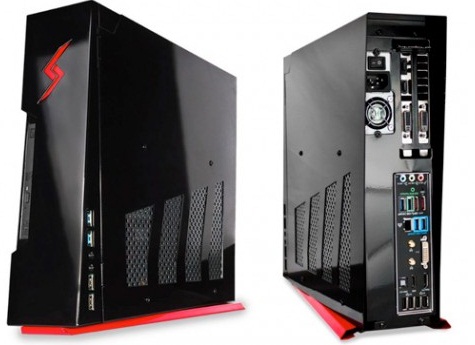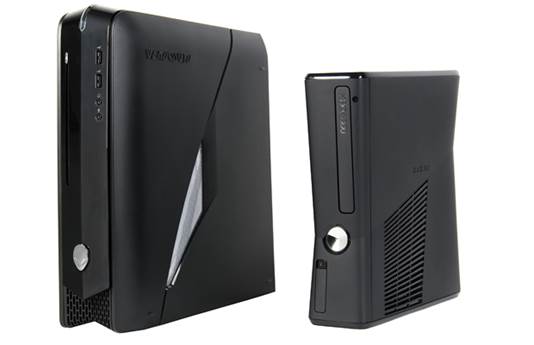It’s confirmed: The PC is going small
One is an outlier. Two a coincidence. But
three, as we know from News Media Statistics 101, is a crystal-clear trend.
And that’s just what we have with Digital
Storm’s Bolt, which follows on the heels of Alienware’s X51 (reviewed May 2012)
and Falcon Northwest’s Tiki (reviewed September 2012): proof that the PC is
making an assault on the living room. Of course, the “assault on the living
room” is our own private fantasy about the PC pushing the traditional game con
sole overboard Digital Storm just presents the box as a small PC (although we
will note that the machine came with a wireless keyboard and game controller).

Digital
Storm just presents the box as a small PC (although we will note that the
machine came with a wireless keyboard and game controller).
This isn’t some crazy conspiracy theory.
Think about it: The timing is perfect for the PC to muscle out game consoles.
Consoles are crawling along in the equivalent of a Model T white the PC speeds
by in a 2013 Corvette 427.
For example: The Xbox 360 is rolling
basically an ATI X1900 XT and a 3.2GHz tn-core Power PC using an in-order
execution engine, and 512MB of 100MHz GDDR3 is shared between the CPU and GPU.
Compare that to the Bolt’s Core i7-3770K chip, 16GB of DDR3/1600, and GeForce
GTX 680 card.

This
isn’t some crazy conspiracy theory.
Digital Storm doesn’t just settle for the
3770K’s stock 3.5GHz, either. The company pushed the Ivy Bridge processor to a
stable 4.4GHz. That’s about 200MHz faster than Falcon Northwest’s similarly
spec’d Tiki.
There’s a cost with the performance,
though. The prototype Bolt we reviewed would get too Loud for our tastes under
heavy gaming and CPU loads. Digital Storm said it has licked most of the noise
issue with an additional PSU fan and proved it by showing us a second prototype
unit with the modification. Indeed, the sound was quieter but still not as
quiet as the liquid-cooled Tiki or the X51. It’s not horrible, but you will
need to crank up the volume while gaming.
At 4.4GHz, the IVB in the Bolt can’t
out-muscle our zero-point’s Hexa-core Core i7-3960K overclocked to 3.8GHz in
the multithreaded tasks, but it does offer 8 percent and 9 percent benefits in
the tests that aren’t reliant on mega cores to run. Against its contemporaries,
however, the Bolt does far better. Given its 200MHz advantage over the Falcon
Northwest Tiki, the Bolt had a small advantage in computing tasks. In gaming
though, the Bolt bested the Tiki by an impressive 13 percent in 3DMarkll and 7
percent in Batman: Arkham City. Since both boxes use similarly clocked GeForce
GTX 680s, were attributing the difference to the higher CPU clocks of the Bolt
as well as updated driver optimizations Nvidia has done since we reviewed the
Tiki.
The Bolt’s build is unique. Rather than
contracting with a large vendor to put a new façade on its existing case,
DStorm had the chassis built to its design specs by a local shop. The custom
case is but 3.6 inches wide, which Digital Storm says is the thinnest chassis
out today. And like the FNW Tiki, the Bolt relies on an internal PSU rather
than an external power brick like Alienware’s X51. The company says the chassis
can fit a GeForce GTX 690 and run it on the 500-watt PSU. but the acoustics
would simply be too much. Our biggest complaint with the Bolt is the same
complaint we had about the Tiki: We want a horizontal mode. The upright form factor
is not a deal breaker, but most people who run a PC near their TV will want to
lay it flat.

Alienware’s
X51
Overall, we like the Bolt. It’s small,
fast, and a relatively good deal compared to the FNW Tiki, which tips the
scales at $4K. The Bolt comes in under $2K (sans the nifty liquid cooler, RAID,
and granite base of the Tiki). The Bolt, however, does support a RAID
configuration and its case is locally sourced and organic. OK, maybe not
organic, but it is made in the USA.